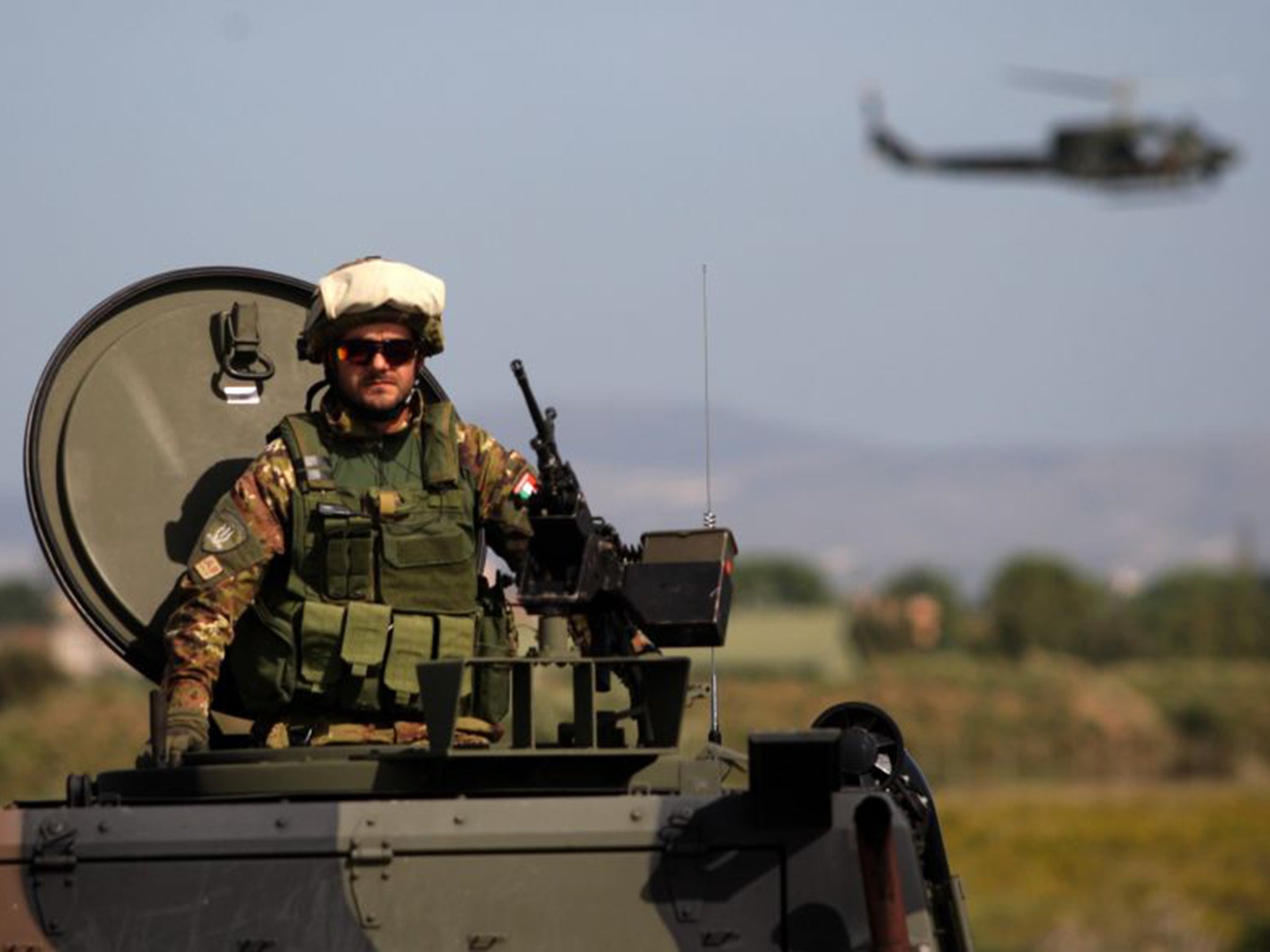US forced to borrow equipment for five-week Nato exercise in central Mediterranean
The Nato exercise will involve 36,000 military personnel, 140 aircraft and more than 60 ships from at least 30 countries

Your support helps us to tell the story
From reproductive rights to climate change to Big Tech, The Independent is on the ground when the story is developing. Whether it's investigating the financials of Elon Musk's pro-Trump PAC or producing our latest documentary, 'The A Word', which shines a light on the American women fighting for reproductive rights, we know how important it is to parse out the facts from the messaging.
At such a critical moment in US history, we need reporters on the ground. Your donation allows us to keep sending journalists to speak to both sides of the story.
The Independent is trusted by Americans across the entire political spectrum. And unlike many other quality news outlets, we choose not to lock Americans out of our reporting and analysis with paywalls. We believe quality journalism should be available to everyone, paid for by those who can afford it.
Your support makes all the difference.Amid budget cuts and shifting global security threats, the US has been forced to borrow equipment from other Nato members – including British helicopters – as the military alliance launches its largest exercise in Europe for 13 years.
The Nato exercise in the central Mediterranean, which was officially opened today and is due to last for five weeks, will involve 36,000 military personnel, 140 aircraft and more than 60 ships from at least 30 countries. It is designed both to demonstrate and to test Nato’s military might in the region, at a time when Russia is also flexing its muscles in the Middle East.
However, the US military presence in Europe has shrunk significantly in recent years, from more than 200,000 American troops at the end of the Cold War to approximately 30,000 today. The US no longer has any tanks in the continent, with the Pentagon’s diminished budget resources being redirected towards trouble spots in the Middle East and Asia.
“We don’t have enough helicopters to do what we need to do,” Lieutenant General Ben Hodges, the commander of the US Army in Europe, told the New York Times, saying it was “essential” for US forces to train using UK aircraft.

The exercise, which is being led from Trapani in Sicily and will spread into Spain and Portugal, imagines the invasion of a small member of the 28-nation Nato alliance by a larger aggressor. It was reportedly planned long before Russia took an active role in the nearby Syrian conflict, but is nonetheless a reflection of increasing tensions in the region, with Libya and Syria in turmoil and the Islamic State amassing territory adjacent to Turkey, a Nato member.
Russia, which performed military drills in the Mediterranean this year, has been invited to observe the Nato exercise. General Philip Breedlove, the US Air Force General who commands Nato, told Reuters at yesterday’s ceremony for military and political leaders, that the exercise “sends a very clear message to any potential aggressor”, adding: “Any attempt to violate the sovereignty of one Nato nation will result in the decisive military engagement of all Nato nations.”
Join our commenting forum
Join thought-provoking conversations, follow other Independent readers and see their replies
Comments